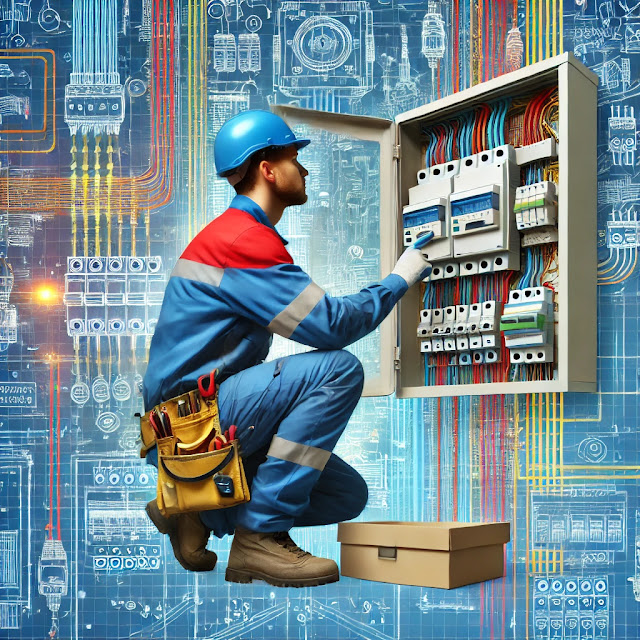
Today, we will cover the basics of electrical codes, their significance, and practical tips for ensuring compliance in your projects.
What Are Electrical Codes? (Electrical Installation Standards)
Electrical codes or installation standards are sets of rules and standards that dictate how electrical systems should be installed and maintained. These codes are typically developed by national or international bodies and are adopted by local authorities to ensure uniformity in electrical work.
Common Electrical Codes:
1. National Electrical Code (NEC): Widely used in the United States, the NEC (also known as NFPA 70) provides comprehensive guidelines for electrical installations.
2. IEC Standards: The International Electrotechnical Commission (IEC) issues standards used globally, particularly in Europe and Asia.
3. Canadian Electrical Code (CEC): In Canada, the CEC provides similar guidelines tailored to the country’s specific needs.
4. BS 7671 (IET Wiring Regulations): Used in the UK, these regulations set out the requirements for electrical installations.
Why Are Electrical Codes Important?
Complying with electrical codes is essential for several reasons:
1. Safety
Electrical codes are primarily designed to prevent electrical shocks, fires, and other hazards. By following these codes, you minimize the risk of accidents and financial loss.
2. Legal Compliance
In many countries and regions, adherence to electrical codes is mandatory. Non-compliance can lead to legal issues, fines, or the need to redo work at significant expense.
3. System Efficiency
Proper implementation of codes ensures that electrical systems operate efficiently, reducing energy waste and lowering operational costs.
4. Future Proofing
Complying with current electrical codes ensures that your installation is up-to-date and can accommodate future upgrades or changes.
Key Aspects of Electrical Codes
All electrical codes are made up of some basic aspects. These include:
1. Wiring Methods and Materials
Electrical codes specify the types of wiring methods and materials that are acceptable. For instance, certain types of wiring may be required for high-temperature environments or areas with high moisture levels.
2. Circuit Protection
Codes mandate the use of circuit breakers, fuses, and other protective devices to prevent overloads and short circuits.
3. Grounding and Bonding
Proper earthing or grounding and bonding are essential for the safety of personnel and electrical equipment. Codes outline how and where earthing or grounding should be done to ensure safe operation.
4. Load Calculations
Electrical codes require accurate load calculations to ensure that circuits are not overloaded. This involves determining the total expected load and selecting appropriate wire sizes and protective devices.
5. Panel and Junction Box Requirements
Codes specify the installation and clearance requirements for electrical panels and junction boxes, ensuring accessibility and safety during maintenance.
Steps for Implementing Electrical Codes in Your Projects
1. Familiarize Yourself with Relevant Codes
Before starting any project, research the electrical codes that apply in your country or region. Obtain copies of the relevant codebooks and understand the specific requirements.
2. Plan Your Installation
Proper planning is key to a successful electrical installation. Create detailed diagrams and layouts that adhere to the required codes.
3. Use Approved Materials and Equipment
Ensure that all materials and equipment used in your project are code-compliant and approved for the specific application.
4. Perform Regular Inspections
During installation, conduct regular inspections to ensure that the work complies with the code requirements. This can help catch potential issues early.
5. Hire Qualified Professionals
For complex projects, consider hiring licensed electricians and engineers who are familiar with local electrical codes.
6. Obtain Necessary Permits
Many jurisdictions require permits for electrical work. Ensure you obtain all necessary permits before beginning your project.
7. Test the System
Once the installation is complete, test the system thoroughly to ensure that it operates correctly and safely.
Common Challenges in Implementing Electrical Codes
1. Keeping Up with Code Updates
Electrical codes are periodically updated to reflect new technologies and safety practices. Staying up-to-date can be challenging but is essential for compliance.
2. Interpreting Complex Requirements
Some code requirements can be complex or open to several interpretations. When in doubt, consult with experts or local inspectors.
3. Balancing Cost and Compliance
While following electrical codes is necessary, it can sometimes increase costs. Striking a balance between cost and compliance is key to a successful project.
Understanding and implementing electrical codes in your projects is crucial for ensuring safety, efficiency, and legal compliance as well as minimizing financial loss.
By familiarizing yourself with the relevant codes, planning thoroughly, using approved materials, and conducting regular inspections, you can ensure that your electrical installations meet the highest standards.
